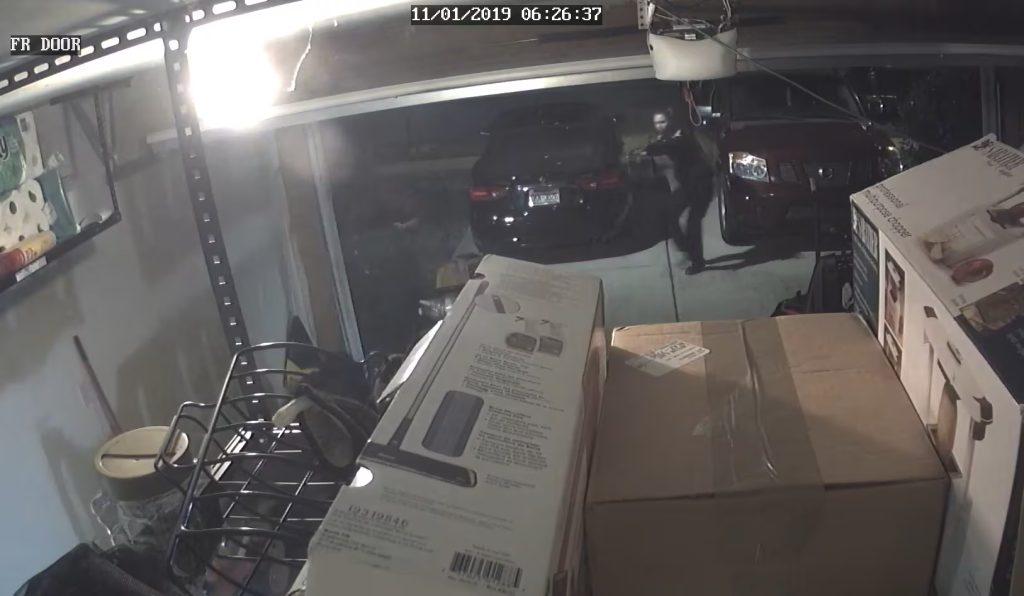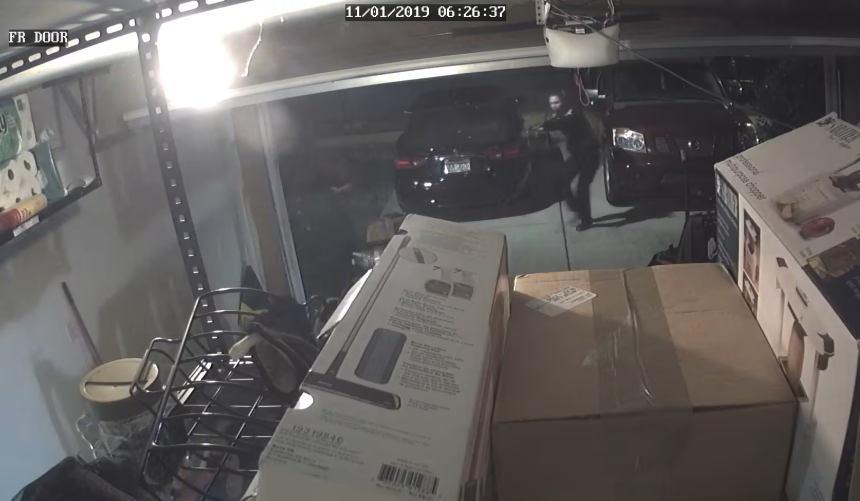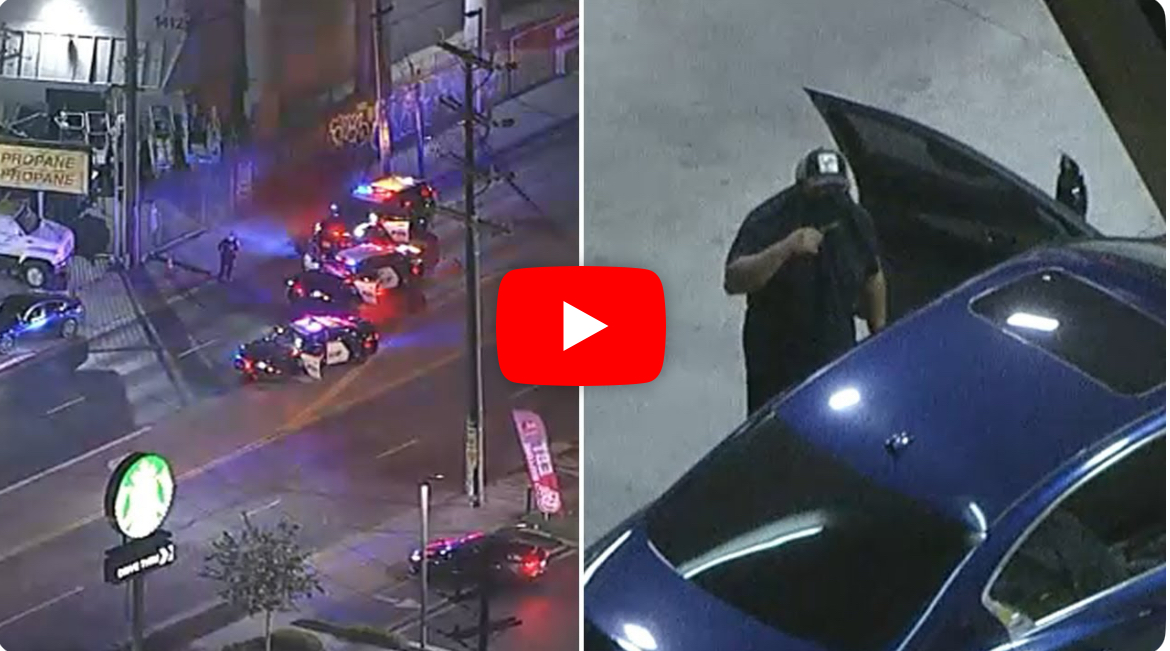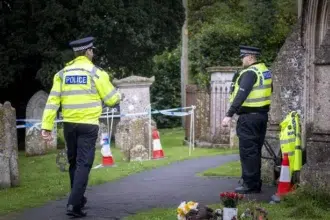Federal Court Releases Never Before Seen Footage of 2019 Drug Raid Gone Catastrophically Wrong
The video is brutal. Chaotic. And absolutely devastating.
- Federal Court Releases Never Before Seen Footage of 2019 Drug Raid Gone Catastrophically Wrong
- The Raid: What Was Supposed to Happen
- When Everything Went Wrong
- “He’s a Cop!” The Words That Saved His Life
- The Aftermath: A Career Destroyed, A Life Changed Forever
- The Legal Battle: Six Years and Counting
- The Video Nobody Was Supposed to See
- What the Video Actually Shows
- The Questions That Demand Answers
- The Systemic Problems This Exposes
- Community Impact and Trust Erosion
- Where Things Stand Now
- The Calls for Reform
- The Bottom Line
Red and blue police lights illuminate a Charlotte garage. Officers swarm the entrance. Gunfire erupts inside. Then officers scramble out in every direction. One is visibly crawling on the ground, unarmed, clearly injured.
And then a Charlotte Mecklenburg Police Department officer standing in the driveway opens fire. Not at a suspect. At her crawling partner. Fourteen times.
The newly unsealed surveillance and body camera footage from a November 1, 2019 drug raid has finally been released after a six year legal battle. What it shows is one of the most disturbing friendly fire incidents in modern law enforcement history. And it raises urgent questions about how a routine search warrant execution devolved into an officer shooting his own team member repeatedly while he crawled, unarmed, trying to escape the garage.
Clarence Delano Belton Jr., a veteran Gastonia police officer with nearly a decade of experience and more than 80 search warrants under his belt, will never work in law enforcement again. His career ended that Halloween night in 2019 when Officer Heather Loveridge of the Charlotte Mecklenburg Police Department mistook him for the suspect and unleashed a barrage of gunfire that left him permanently disabled.
The brutal video, obtained and released by WBTV after the Fourth Circuit Court of Appeals ordered it unsealed in October 2025, provides the third perspective in a case where Belton’s and Loveridge’s accounts differ dramatically. And what that third perspective shows is absolutely damning.
The Raid: What Was Supposed to Happen
November 1, 2019. Just after 6 p.m. The FBI Safe Streets Task Force prepared to execute a search warrant at a northeast Charlotte home. The target: Larry McConneyhead, suspected of trafficking methamphetamine.

Belton, working with the FBI task force, was one of several officers converging on the residence. The Charlotte Mecklenburg Police Department was called in to provide “blue light” perimeter support. Two CMPD officers were pulled from a lower priority call and sent over.

One of those officers was Heather Loveridge. According to her later deposition testimony, she received minimal instructions about the operation. A task force officer briefed her. Gave her a suspect description. No picture. Just a description: Black man, about six feet tall, 280 pounds.

Clarence Belton was the only Black officer on the task force that night. He stood six feet tall.
The stage was set for catastrophe.
When Everything Went Wrong
Surveillance video shows McConneyhead in his driveway, rolling his trash out for collection. Then he spots the armed officers converging. He runs. Straight into his garage. Into his home.
Belton and his partner follow McConneyhead into the garage. Video shows them pausing, waiting for backup. Other task force officers arrive, including the two CMPD officers. The group gathers near the garage door leading into the house. Loveridge stands with them. A brief discussion appears to happen.
Belton moves around the garage. Loveridge later testified she didn’t see him there. Despite standing feet away from him moments earlier.
The task force decides to breach. They take a battering ram to the door. As the door comes down, Belton sees a woman inside in what he describes as a “shooter stance.” She’s pointing a gun directly at him.
“Gun, gun!” Belton shouts. He fires one shot toward the woman.
Simultaneously, he feels his right arm go numb. He’s been hit. But not by the woman. By friendly fire from another task force officer. His weapon drops from his grip. He turns to flee the garage.
The surveillance video captures what happens next in horrifying detail. Two task force officers run out of the garage, passing Loveridge. A third officer appears to stumble and crawl along the floor. A fourth officer darts out after him.
That crawling figure is Belton. Unarmed. Visibly injured. Trying to exit the garage.
Loveridge said later that when she turned back to the garage, she saw no officers inside. She believed the crawling man was McConneyhead. She believed he was the shooter.
From her position in the driveway, she opened fire. Over and over and over. Fourteen rounds. At a man crawling on the ground. Without a weapon.
“He’s a Cop!” The Words That Saved His Life
Belton described the moment in deposition testimony. His voice shaking as he recounted the terror.
“As I was heading out of the garage, I kept slipping and falling,” he said. He could hear shots continuing to fire. He was on his hands and knees. Crawling. Desperate to reach safety.
That’s when Loveridge’s bullets started hitting him. Multiple rounds struck his right arm. His left arm. The lawsuit describes a “gaping hole” in his wrist where one bullet tore through.
According to court documents, Loveridge kept firing until someone yelled: “He’s a cop!”
Only then did she stop. Those three words arguably saved Belton’s life.
Immediately, Loveridge called on her radio: “10 33, officer down, we need MEDIC now!” She attempted to provide aid to Belton while waiting for medics to arrive.
But the damage was done. Belton had been shot multiple times. By his own partner. On his own team.
The Aftermath: A Career Destroyed, A Life Changed Forever
Belton was rushed to the hospital. He underwent several surgeries on both arms. The injuries were catastrophic. Permanent. His law enforcement career, nearly a decade with the Gastonia Police Department, was over.
“The permanent injuries ended his law enforcement work,” Judge Paul Niemeyer of the Fourth Circuit Court of Appeals wrote in February 2025.
The mental and emotional toll? Immeasurable. Imagine being shot by your own partner. Imagine crawling for your life while someone you trusted opens fire on you. Imagine realizing, in that moment of absolute terror, that the bullets aren’t coming from the suspect. They’re coming from behind. From your team.
Loveridge was placed on administrative leave immediately after the shooting. Standard procedure when an officer discharges their weapon. But as investigators dug into what happened that night, the picture that emerged was damning.
The Charlotte Mecklenburg Police Department’s Internal Affairs Bureau investigated. The Shooting Review Board reviewed the evidence. Their conclusion: Loveridge’s actions violated CMPD’s use of deadly force policy.
The board determined her actions were unjustified. Not consistent with department policy. She was suspended and cited for termination in October 2020, nearly a year after the shooting.
But here’s where it gets complicated. The Mecklenburg County District Attorney reviewed the case in July 2020 and declined to file criminal charges. The reasoning: insufficient evidence to prove unreasonable use of force.
So Loveridge was fired from her job. But she faced no criminal consequences for shooting an unarmed, crawling fellow officer fourteen times.
The Legal Battle: Six Years and Counting
In 2022, Belton filed a federal lawsuit against Loveridge and the City of Charlotte. The lawsuit alleges excessive force, deprivation of civil rights under Section 1983, negligence, assault and battery, and negligent infliction of emotional distress.
Belton is seeking damages in excess of $25,000. Given the severity of his injuries and the permanent end to his career, the actual damages could be substantially higher.
Loveridge has fought the lawsuit aggressively. She filed for qualified immunity, arguing that her actions were reasonable given the rapidly unfolding, dangerous situation. She claims she believed Belton represented an immediate threat of death or serious injury.
US District Judge Max Cogburn initially denied Loveridge’s motion for summary judgment and her claim to qualified immunity. He found that disputed facts precluded granting immunity.
But Loveridge appealed. In February 2025, the Fourth Circuit Court of Appeals vacated Judge Cogburn’s ruling and remanded the case back to him. The appeals court, in an opinion written by Judge Paul Niemeyer, found that Cogburn “failed to conduct the distinct analysis required for determining immunity.”
The court explained: “Under the well established analysis, Officer Loveridge would be entitled to qualified immunity from a Section 1983 claim unless she violated a constitutional or statutory right, and the right was clearly established at the time.”
Translation: Loveridge gets another shot at claiming immunity. The case continues.
The Video Nobody Was Supposed to See
For years, this video evidence remained sealed. Hidden from public view. Belton and Loveridge had agreed to seal the footage, though their motions provided minimal justification for why sealing was necessary.
WBTV, the Charlotte based television station operated by Gray Local Media Inc., had covered the shooting and its aftermath extensively. They wanted access to the video. The public had a right to see what actually happened.
WBTV filed a motion to intervene in the case and a motion to unseal the video. Judge Cogburn denied both requests. He ruled that WBTV lacked jurisdiction to intervene. He also ruled that even if he had jurisdiction, Loveridge’s right to a fair trial outweighed any First Amendment interest WBTV had in accessing the footage.
WBTV appealed. And in September 2025, the Fourth Circuit Court of Appeals delivered a unanimous ruling in their favor. The opinion, written by Circuit Judge Nicole Berner and joined by Judges James Wynn and Julius Richardson, was a complete rebuke of the lower court’s decision.
“The district court’s order sealing the video footage violated the well established rights of the press and of the public to access judicial documents and records,” Judge Berner wrote.
The appeals court found that Loveridge had failed to meet her burden of proving that her right to a fair trial outweighed the public’s First Amendment right of access.
“Loveridge did not address narrow tailoring, nor did she present any evidence, reasoning, or argument as to why specifically her right to a fair trial would be impacted by the wholesale or partial unsealing of the videos,” the opinion stated. “Loveridge’s arguments before the district court were devoid of any support beyond mere summary conclusions that her right to a fair trial would be impaired.”
The court vacated and reversed the sealing order. The video was ordered unsealed. And in October 2025, it was finally released to the public.
What the Video Actually Shows
The surveillance footage from the garage is damning. The body camera footage from Loveridge’s partner adds critical audio context. Together, they paint a clear picture of what happened.
You can see the officers enter the garage. You can see them regroup near the door to the house. You can see the battering ram breach. You can hear the initial gunshots from inside the home.
Then you see officers scrambling out. Bullet casings fly across the screen. The chaos is palpable. Two officers run past Loveridge. Then you see a figure on the ground. Crawling. Moving toward the exit.
And then you see Loveridge fire. Again. And again. And again. The muzzle flashes are visible. She’s shooting at the crawling figure.
One officer appears to be limping as they exit the garage. That’s Belton. Hit multiple times. Trying to escape the gunfire from his own partner.
Dr. Seth Stoughton, a former police officer and current law professor who reviewed the footage, was blunt in his assessment. “There’s no justification for firing that weapon,” he stated.
He elaborated: “In her defense, I mean, this is a very quickly unfolding, dangerous situation. But again, you don’t use deadly force unless there is a threat of deadly force being used against you or somebody else.”
By the time Loveridge fired, Belton had dropped his weapon. He was on the ground. He was crawling. He presented no threat that Loveridge couldn’t reasonably get away from.
Yet she fired fourteen times.
The Questions That Demand Answers
This case raises urgent issues about modern policing, multi agency coordination, and use of force policies.
How did Loveridge not recognize Belton as a fellow officer? She had been standing feet away from him moments earlier in the garage. She was part of the group discussion before the breach. How did she not know who was on her team?
Why was Loveridge given only a suspect description with no photo? Why wasn’t there better coordination between the FBI task force and the CMPD perimeter officers?
What identification protocols exist for multi agency operations? Should officers wear more distinctive uniforms or markings when working joint operations?
Why did Loveridge fire at a crawling, visibly unarmed person? Even if she believed it was the suspect, what threat did a crawling figure without a weapon pose that justified fourteen rounds?
Where was the tactical training? Where was the threat assessment? Where was the split second recognition that something wasn’t adding up?
And perhaps most troubling: why did it take six years for this video to see the light of day? What purpose did sealing it serve beyond protecting Loveridge from public scrutiny?
The Systemic Problems This Exposes
This isn’t just about one officer making one terrible mistake. This is about systemic failures in how law enforcement conducts high risk operations.
The FBI Safe Streets Task Force and CMPD were supposed to be coordinated. They were supposed to be working together. Yet Loveridge had minimal information about the operation. She didn’t know the full team. She didn’t have adequate briefing.
The suspect description she received, “Black man, six feet tall, 280 pounds,” could have matched Belton. He was the only Black officer on the task force. That should have been flagged immediately as a potential identification problem.
Multi agency operations require clear protocols. Every officer needs to know who’s on the team. They need photos. They need distinctive markings. They need communication that prevents exactly this scenario.
The use of force issue is equally problematic. Loveridge claimed she believed Belton was the suspect and represented an imminent threat. But the video shows a crawling, unarmed man trying to exit a garage. That doesn’t meet any reasonable standard for deadly force.
Experts have noted that this case could test Graham v. Connor, the 1989 Supreme Court case that established modern use of force standards. Ironically, Graham v. Connor originated in Charlotte with a diabetic man injured by police.
Now, decades later, another Charlotte case may define the limits of reasonable force in rapidly evolving tactical situations.
Community Impact and Trust Erosion
The release of this video comes at a time when law enforcement agencies face heightened scrutiny. Community trust in policing is fragile. Cases like this absolutely shatter it.
People expect police to protect them. They expect officers to identify threats accurately. They expect that when cops conduct raids, they know who they’re shooting at.
The fact that Loveridge could fire fourteen rounds at a crawling partner and face no criminal charges is devastating for public confidence. The fact that the video was hidden for six years makes it worse.
Attorney Lauren Russell, representing WBTV in the fight to unseal the footage, spoke to the broader implications.
“They’re saying no ‘ifs, ands, or buts,’ a motion to unseal needs to be addressed quickly,” Russell said of the appeals court ruling. “And if you do not do so, once it comes to us, we’re going to address it.”
She emphasized that this impacts everyone, not just the press. “You can go to the court and ask that records be unsealed. You have that right. This is exactly what our systems are meant to do. They’re meant to be for the people, not just for the lawyers or those with lawyers.”
Transparency matters. Accountability matters. When law enforcement agencies and courts attempt to hide video evidence of officer involved shootings, even friendly fire incidents, it breeds suspicion and erodes the legitimacy of the entire system.
Where Things Stand Now
As of October 2025, the case between Belton and Loveridge continues in federal court. Loveridge is pursuing qualified immunity again following the Fourth Circuit’s remand. Judge Cogburn must now conduct the proper analysis to determine if she violated a clearly established constitutional right.
The City of Charlotte remains a defendant in the lawsuit. They face potential liability for negligence in how the operation was planned and executed.
Belton continues dealing with the physical, emotional, and financial consequences of that November night. His law enforcement career is over. His body bears permanent scars. His trust in the system he dedicated his life to defending has been shattered.
Loveridge no longer works for the Charlotte Mecklenburg Police Department. She was fired after the shooting. But she continues fighting to avoid civil liability and maintain that her actions, while tragic, were justified given the circumstances.
Larry McConneyhead, the original target of the search warrant, was never charged with anything related to the events of that night. The focus shifted entirely to the friendly fire incident.
The video that was hidden for six years is now public. Anyone can watch it. Anyone can see exactly what happened in that garage. And anyone can form their own opinion about whether fourteen rounds fired at a crawling, unarmed partner constitutes reasonable use of force.
The Calls for Reform
Policy advocates and community leaders are demanding concrete changes in response to this incident.
Better uniform identification for multi agency entry teams. Officers working joint operations should wear clearly identifiable markings that distinguish them from potential suspects.
Clearer pre raid briefings with photos of all team members. Every officer should know exactly who they’re working with before weapons are drawn.
Stricter rules for perimeter officers engaging without full operational context. Officers providing backup support need comprehensive information about the operation, not just a vague suspect description.
Enhanced use of force training that emphasizes target identification before firing. The split second decision making that leads to friendly fire needs to be addressed through better training and clearer protocols.
Mandatory body cameras and surveillance for all high risk operations with immediate review protocols when shootings occur.
Greater transparency in officer involved shooting investigations. Videos should be released promptly unless there’s a compelling, specific reason for sealing them.
These reforms won’t undo what happened to Clarence Belton. But they might prevent the next officer from crawling out of a garage while a partner fires fourteen rounds at their back.
The Bottom Line
On November 1, 2019, the FBI Safe Streets Task Force and Charlotte Mecklenburg Police Department conducted a drug raid that was supposed to be routine. They had a suspect. They had a warrant. They had a plan.
Instead, they had a disaster. Clarence Delano Belton Jr., a veteran Gastonia officer with nearly a decade of experience, was shot fourteen times by Officer Heather Loveridge of CMPD. She mistook him for the suspect despite him being a fellow officer, despite him being unarmed, despite him visibly crawling on the ground trying to escape.
Belton’s career is over. His body is permanently damaged. His life has been irrevocably changed.
Loveridge was fired but faces no criminal charges. She continues fighting civil liability in court.
The video that documented this catastrophe was hidden from the public for six years until the Fourth Circuit Court of Appeals ordered it unsealed in a major First Amendment victory.
Now the footage is public. The facts are clear. The questions demand answers.
In the fog of war style policing that characterizes modern drug raids, the greatest threat doesn’t always come from the suspects. Sometimes it comes from your own side. From the partner standing behind you who fires fourteen rounds before asking questions.
Clarence Belton survived that night. But his career, his body, and his trust in the system did not.
And now, six years later, the world can finally see exactly what happened in that Charlotte garage. Every frame. Every shot. Every terrifying second of an officer being gunned down by his own team.
The unsealed footage carries the weight of that moment. A misidentified partner. Fourteen bullets fired. And a system now in the glare of accountability, forced to answer for how something so catastrophically wrong could have happened in the first place.





